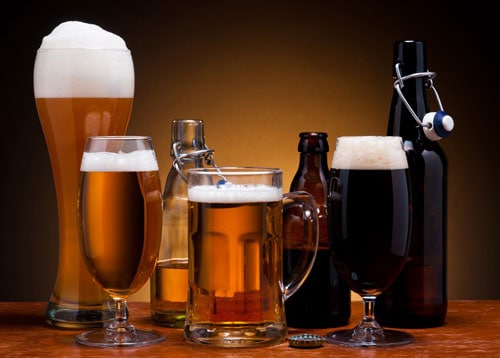As a homebrewer you need to be able to look at recipes and have an idea of how they will end up tasting, otherwise you are playing an expensive guessing game. The first concept, you have to understand when reading recipes is bittering. Bittering refers to how bitter your eventual beer will be. International Bittering Units (IBUs) are the most common measurement of bitterness of beer. A good recipe should specify how many bittering units would be in your final product. Homebrew Bittering Units (HBUs) is a measurement of bitterness that I find to be not very useful but something you will need to know. HBUs were developed to make calculating the bitterness of your homebrew easier. When a recipe refers to HBUs, it is not the same thing as IBUs.
Alpha Acids are contained in hops and are the main ingredient that makes your beer bitter. Alpha Acids contribute to, but are not the same thing as bittering units. Hop’s alpha acid levels are in a percentage while bittering units are a number. Since every batch of hops has a different alpha acid content, you may have to adjust the amount of hops you add to get the desired bitterness in your beer. A good recipe will specify how to do that, or you can take the recipe to your local brew store and ask them to help.
Beer color can be measured on three different scales, but the most common one you will find is the Standard Reference Method scale or SRM. This uses light technology to determine the exact color of beer in a number. The Lovibond Scale (shown below) is a much older method for measuring beer color, but is generally not used in recipes anymore because it is all visual and can change based on a person’s perception. You may also encounter the European Brewing Convention or EBC as a measurement of beer color. However, SRM is the only one with which you will need to be very familiar with as a home brewer in the US.
To start understanding how your beer will turn out, get a wide variety of different beers from your local grocery store. Also get a recipe book that contains these different beers. Clone Brews by Tess and Mark Szamatulski (Affiliate) is a good book for this. The recipes will tell you these beers’ bitterness level and color.
Taste each beer and look up its bitterness level and color. Write down the bitterness and color of each beer, along with your impressions and any other flavors that came up. Now see if you can identify what in the recipe is causing those flavors.
Repeat this process two different times on two different occasions. The first time you will be simply familiarizing yourself with different bitterness levels, colors, and tastes. By the second time you should be more familiar with the different levels of bitterness and be able give a beer a bitterness range after tasting it but before looking it up in the book.
The third time you do this don’t look the beers up in the book right away. Go through and write down your bitterness and color predictions for each beer before looking any of them up. See how close you can get.
This process in and of itself will significantly improve your understanding of color and bitterness. It’s not like it is hard work either, just tasting beers! You can start repeating this process with a different selection of beers and also looking for different things, like head, breadiness, and alcohol level.
Drinking beer is always a good time, but drinking beer with the intention of better understanding beer will improve your brewing and it will be a lot of fun. You’ll start seeing results immediately when you look at recipes and already have a better idea what it will taste like. As you continue doing this, you’ll become an expert in beer and move from being an average home brewer to a great home brewer. ')}


